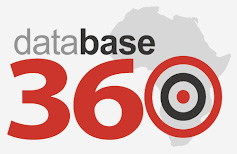In January last year, the African Development Bank forecast 3.9% economic growth on the continent for 2020. However, the rapid onset of the coronavirus shifted the focus to one of business survival. Today, many countries are battling a second wave of infections. If companies are to overcome the current challenges, they need a dynamic sales function built on traditional best practices and enhanced with technology-driven innovations to harness the available opportunities.
“Salespeople have predominantly relied on meeting their leads face-to-face. As events of the past several months have shown, this must evolve to overcome the limitations that lockdown conditions have placed on them. But it is not a case of digital transformation replacing this human-driven process. Instead, it is about leveraging the advantages of each tactical intervention to create a compelling sales narrative,” says Louise Robinson, sales director of CG Consulting.
Changing skills
An African Union report published in June estimated that nearly 20 million jobs in both the formal and informal sectors were threatened with destruction. As conditions worsened, the prognosis has become more dire. Considering that Africa is demographically the world’s youngest continent, the potential to reinvent sales practices with technology-rich processes with which the youth are familiar cannot be ignored.
“Salespeople must look at upskilling themselves in the current environment to thrive in the future business landscape. This sees communication requiring more meaningful human engagement and not less. While the means to do so might be different, the people-centricity will remain,” she says.
Best of both worlds
International research highlights how more than three-quarters of buyers and sellers are now preferring digital self-serve and remote human engagement over face-to-face interactions. This only intensified after the hard lockdowns in many countries ended.
“Even though digital is seen as the new normal of engaging, it is still critical to centre these practices on personalisation through human contact albeit via telephonic or video calling means. Firing off an e-mail or an instant message might be more expedient, but the salespeople truly looking to elevate themselves must bring that sense of individualism to their outreaches.”
The McKinsey research echoes this sentiment as video and live chat have emerged as the dominant channels for interacting and closing sales, especially with business-to-business customers. It has found that the amount of revenue generated globally from video-related interactions has jumped by 69% since April 2020.
Shifting focus
“An important step in this regard is for companies to provide their customers with a sense of clarity of their service offering. During COVID-19, some services are no longer available, while newer ones could have been developed especially during the hard lockdown. Again, this is where constant communication with customers will be part of the lifeblood of the reinvented organisation. They must be kept aware of how changing lockdown levels could impact on service delivery, product availability and the like. Perhaps more importantly, being in touch with customers helps to reassure them that the company is still active and looking at different ways to deliver services.”
That is not to say the transition to more digital-centric sales technologies will be an easy one. As companies are under pressure and forced to retrench staff, those salespeople still active must be able to do more with less. But instead of working harder, the limited resources must be applied in smarter ways.
“The way ahead will be to combine traditional methods with more technology-led solutions. This will assist organisations to enhance the sales function to be more reflective of a post-COVID-19 world,” she concludes.
Share
Editorial contacts
